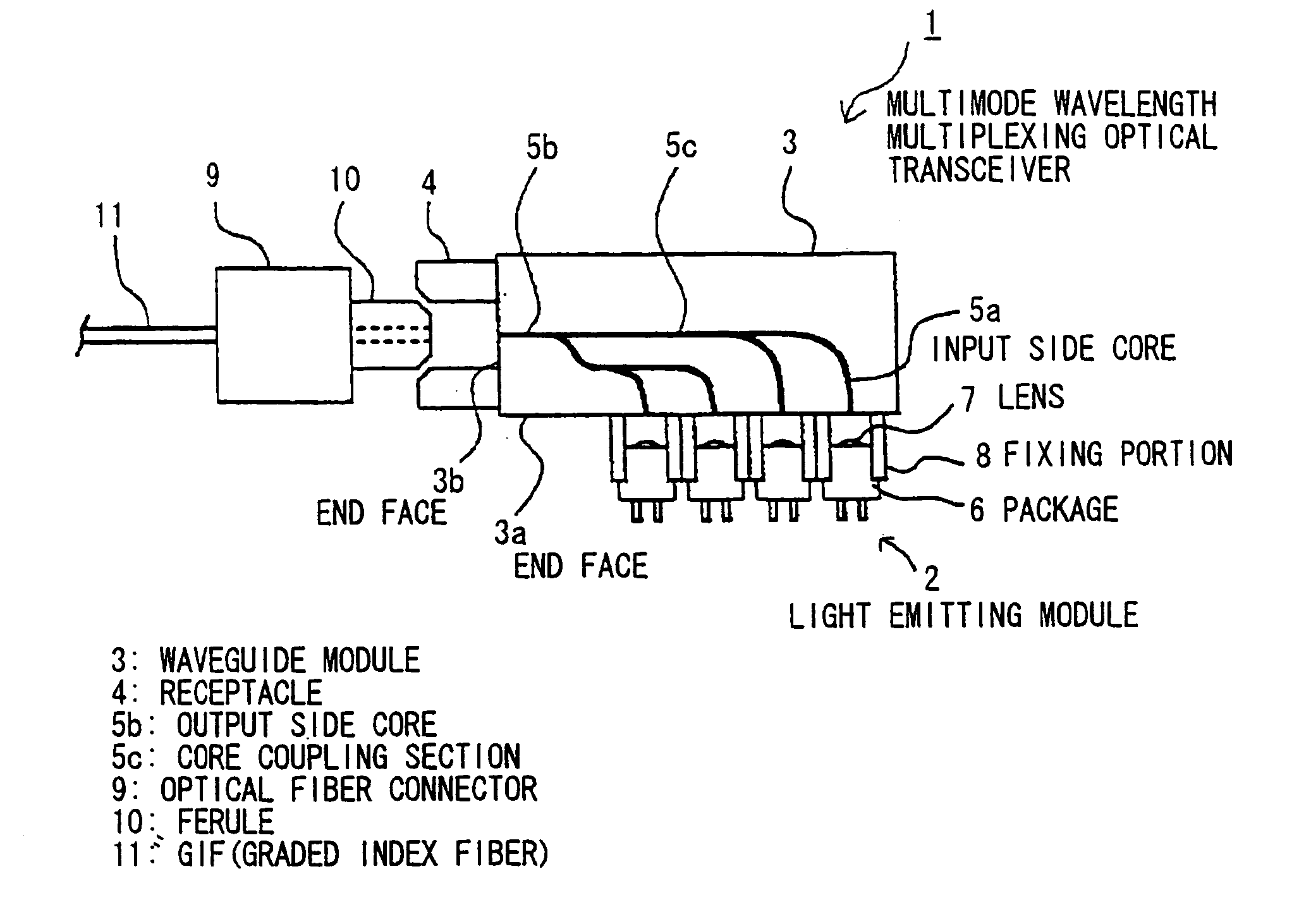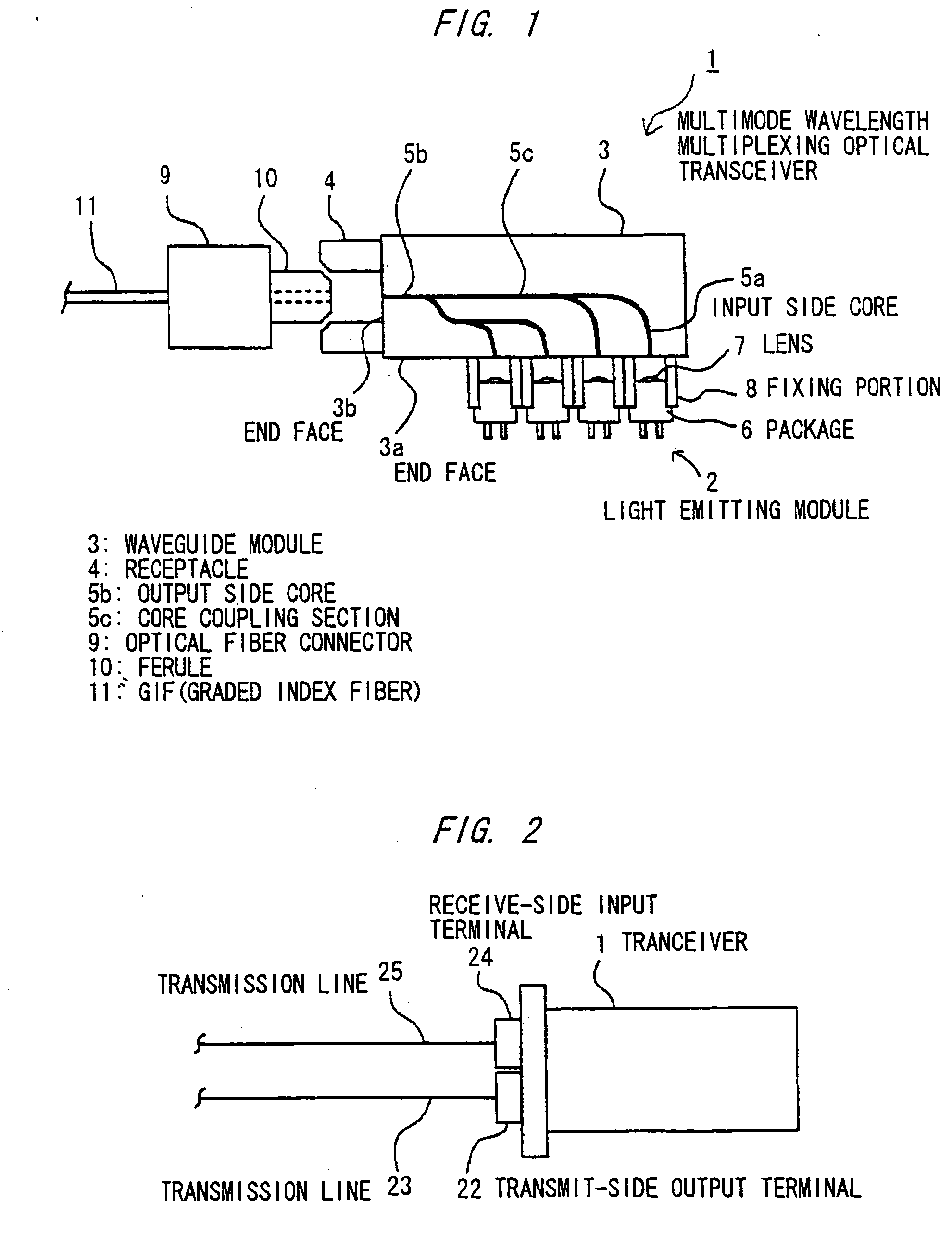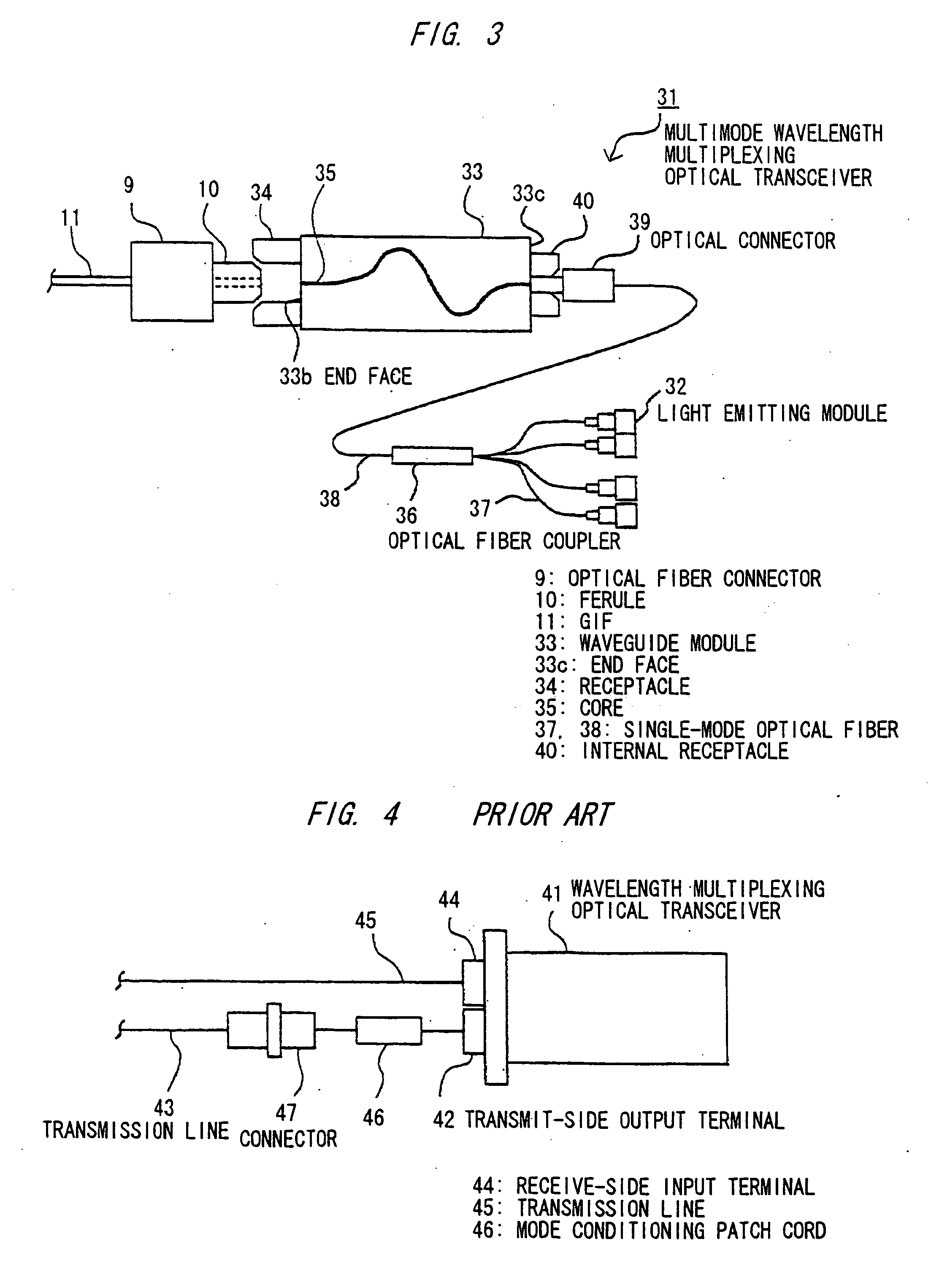Multimode wavelength multiplexing optical transceiver
- Summary
- Abstract
- Description
- Claims
- Application Information
AI Technical Summary
Benefits of technology
Problems solved by technology
Method used
Image
Examples
first embodiment
[0046]FIG. 1 is a schematic diagram showing a multimode wavelength multiplexing optical transceiver in the first preferred embodiment according to the invention.
[0047] As shown, the multimode wavelength multiplexing optical transceiver (hereinafter simply called transceiver) 1 comprises: plural light emitting modules 2 that light emitting elements to output single-mode lights with wavelengths different each other is sealed in a package with a lens; the step-index type multimode waveguide module 3 that guides and multiplexes lights from the light emitting modules and allows the reduction of the low-order mode component in generating a multimode light; and an optical fiber connector receptacle (hereinafter simply called receptacle) 4 that is provided at an output terminal for outputting the multiplexed multimode light from the step-index type multimode waveguide module 3.
[0048] The transceiver 1 is provided with a component for reception, but the component is omitted herein. Further...
second embodiment
[0059]FIG. 3 is a schematic diagram showing a multimode wavelength multiplexing optical transceiver in the second preferred embodiment according to the invention.
[0060] As shown, the multimode wavelength multiplexing optical transceiver (hereinafter simply called transceiver) 31 comprises: plural light emitting modules 2 that light emitting elements to output single-mode lights with wavelengths different each other is sealed in a package with an optical fiber; a single-mode optical fiber coupler (hereinafter simply called optical fiber coupler) 36 to multiplex lights from the light emitting modules 2; a waveguide module 33 that has a core 35 with a core diameter of 25 μm square, guides and multiplexes lights from the light emitting modules, and allows the reduction of the low-order mode component in generating a multimode light; and a receptacle 4 that outputs the multiplexed multimode light from the waveguide module 33.
[0061] The light emitting module 32 is of so-called a pig tal...
PUM
 Login to View More
Login to View More Abstract
Description
Claims
Application Information
 Login to View More
Login to View More - R&D
- Intellectual Property
- Life Sciences
- Materials
- Tech Scout
- Unparalleled Data Quality
- Higher Quality Content
- 60% Fewer Hallucinations
Browse by: Latest US Patents, China's latest patents, Technical Efficacy Thesaurus, Application Domain, Technology Topic, Popular Technical Reports.
© 2025 PatSnap. All rights reserved.Legal|Privacy policy|Modern Slavery Act Transparency Statement|Sitemap|About US| Contact US: help@patsnap.com



